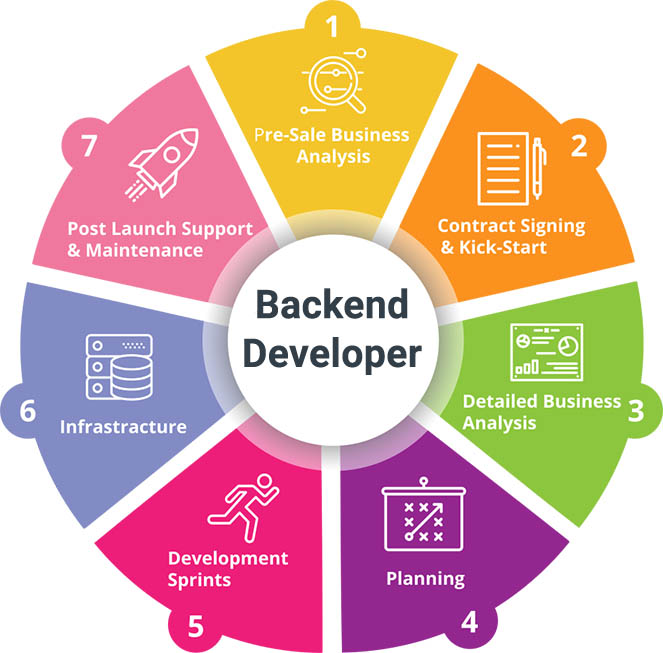Rise by Six: Your Daily Dose of Inspiration
Explore insights and stories that elevate your day.
Back-End Development: The Secret Sauce Behind Your Favorite Apps
Discover the magic of back-end development and how it powers your favorite apps. Uncover the secrets that make them tick!
Understanding APIs: The Backbone of Back-End Development
APIs, or Application Programming Interfaces, play a pivotal role in modern back-end development by serving as bridges that facilitate communication between different software applications. In essence, an API defines a set of rules and protocols for how software components should interact, enabling developers to integrate various functionalities without having to understand the intricate details of each system. For example, when a mobile app needs to fetch data from a server, it makes an API call, requesting specific information in a structured format. This not only streamlines the development process but also promotes flexibility, as developers can switch out components with minimal disruption to the overall architecture.
Understanding the importance of APIs in back-end development also involves recognizing the various types of APIs available. REST (Representational State Transfer) and SOAP (Simple Object Access Protocol) are two common types that developers frequently employ. REST APIs are known for their simplicity and are typically used in web services, leveraging HTTP requests to GET, POST, PUT, and DELETE data. On the other hand, SOAP APIs offer a more robust security model and are favored in enterprise environments where transactional integrity is paramount. By grasping these concepts, developers can enhance their applications, ensuring they are both scalable and adaptable to changing technological landscapes.

Why Back-End Development Matters: Enhancing User Experience
Back-end development plays a crucial role in shaping the overall user experience of a website or application. It is responsible for managing the server, databases, and application logic that work behind the scenes to deliver content quickly and efficiently. When back-end development is executed effectively, it leads to faster load times, seamless navigation, and a more interactive interface, all of which contribute to a positive user experience. If users encounter delays or errors, they are likely to leave the site, highlighting the importance of a solid back-end structure in retaining visitors.
Moreover, efficient back-end systems enhance functionality by enabling features that rely on complex data processing. For instance, user authentication, data retrieval, and processing transactions are just a few examples where back-end development shines. As users interact with a platform, they expect smooth transitions and real-time feedback. Without a robust back-end, these expectations cannot be met, leading to frustration. Therefore, investing in back-end development is essential for businesses aiming to improve their user experience, as it ensures that all components of the website work harmoniously to meet client needs.
How Databases Power Your Favorite Apps: An In-Depth Look
Databases serve as the backbone of modern applications, efficiently storing and managing vast amounts of data that power the features users rely on daily. Whether it’s a social media platform, an e-commerce site, or a streaming service, these apps depend heavily on databases to keep user information, preferences, and transaction records organized. For example, a typical e-commerce application utilizes a database to track inventory levels, user accounts, and order histories, enabling seamless shopping experiences. The ability to access and manipulate this data quickly is crucial, as any delays can affect user satisfaction and overall app performance.
Moreover, the type of database selected can significantly influence an app's scalability and flexibility. Relational databases, such as MySQL or PostgreSQL, are well-suited for applications that require structured data and complex queries, while NoSQL databases like MongoDB are preferred for unstructured or semi-structured data that demand high scalability. By harnessing the right database technology, developers can ensure that their applications not only function efficiently but also have the capacity to grow alongside their user base. In essence, understanding how databases power our favorite apps is crucial for both users and developers alike, paving the way for more innovative and responsive software solutions.